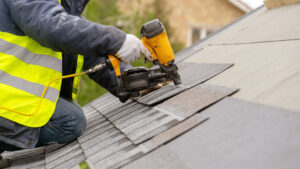Solar panel cleaning can be challenging, especially if the panels are difficult to access. Hiring professionals is the best option because they know how to clean panels without causing any damage.
You do not need to purchase any particular cleaning solution; regular dish soap works perfectly. Be sure to use lukewarm water, as hot or cold water could damage the panels. Click https://wwoftx.com/ to learn more.

One of the most important tools for cleaning solar panels is water. Whether you use a regular garden hose or a bucket of clean, cold water, this is essential to wash away any dust or debris that has accumulated on the panel surface. You may also wish to add a little bit of soap to help remove any stubborn stains or marks on the surface. Some homeowners also recommend adding a cup of vinegar to the water, as this can help break down the dirt and grime that is stuck on.
You should never use high-pressure water on your solar panels, as this can cause microscopic cracks in the surface of the panel glass. These cracks can decrease the efficiency of the panels, and in some cases can even lead to their failure. This type of damage is not only expensive, but it can also void your warranty so that you are left with unusable solar panels.
If you are planning on using a high-pressure power washer, it is best to consult the manufacturer’s guidelines and specifications first. You should always shut down the system as per the instructions, and make sure that you are using a ladder support and safety equipment before beginning the job.
The water you use should be filtered or cold, as tap water often contains minerals that can create a film on the solar panels. This can decrease their energy production, and they will also have to be rinsed more frequently. If you are not comfortable cleaning your solar panels by yourself, you can hire a professional service that will take care of the job for you. These services typically come in the spring and fall when the buildup of dirt is at its lowest.
Soap
A mild soap is the most important ingredient in any solar panel cleaning solution. It helps break down the dirt that accumulates on solar panels, and it also allows water to rinse off easily without leaving streaks. It’s best to avoid using bleach and other harsh chemicals, which can damage the glass surface of your panels and reduce their energy efficiency.
Depending on your location, you may only need to clean your solar panels every six months to a year. If your building is in a heavily polluted area, you may need to clean them more often, as the hard-to-remove pollutants can build up quickly. If you notice a decrease in your solar panels’ energy efficiency, it’s a good idea to clean them as soon as possible.
To keep your solar panels clean, you’ll need a few basic tools: a soft brush with non-abrasive bristles, a bucket of water, and a squeegee. You should also wear rubber gloves and a mask to protect yourself from any dust or other debris that might get into your eyes. Choosing the right day to clean is also essential. You’ll want to start early in the morning, before the sun heats up the panels too much.
It’s also a good idea to use lukewarm water when washing solar panels, as hot or cold water can cause cracks. If you can’t clean your solar panels with a regular garden hose, you can purchase special nozzles for solar panel cleaning that allow you to spray the soapy water onto your panels at low pressure. It’s important to rinse your solar panels thoroughly after cleaning them, as any remaining residue can inhibit their efficiency.
Brushes
When cleaning solar panels, it’s important to use brushes that are designed for the task. These brushes should be soft and non-abrasive, as harsh materials may damage the surface of the panel or leave streaks behind. In addition, it’s crucial to use a cleaning solution that is recommended by the panel manufacturer. Damage to the panels could result in decreased energy output and a loss of warranty protection.
The best brush for solar panel cleaning is one that has a soft, nylon or polyester bristle material. It should also be lightweight and durable, allowing for easier handling. It’s also a good idea to select a brush with a water-fed system, which can help make the cleaning process faster and more efficient.
Another important aspect of a solar panel brush is that it should be able to reach hard-to-reach areas, as well as high or low ones. It’s also essential to know how often you should clean the solar panels, as too much buildup can affect their efficiency and longevity. Cleaning frequency depends on the type of environment where the panels are located, but it’s generally recommended that they be cleaned twice a year in locations with heavy pollution and organic buildup.
A regular cleaning schedule can help maintain the efficiency of solar panels and ensure they last longer, as well as reduce the cost of energy production. It’s also important to use a non-abrasive cleaning solution that is specifically formulated for solar panels. It’s also a good idea not to walk over the panels, as this can crack them or cause rusting. If you can’t reach a spot with your arms, it’s a good idea to use a telescopic pole or robotic cleaner.
Rubber gloves
Solar panel cleaning is a crucial step in maintaining the effectiveness of your photovoltaic system. Keeping your panels clean allows them to produce more energy, which helps you save money and benefit the environment. You can find solar panel cleaners online or from the company you bought your system from. If you prefer to do the work yourself, ensure that all of your safety gear is in place before starting. Since most solar installations are on rooftops, you will need a sturdy ladder to reach them safely. Falls are the leading cause of death for construction workers, and rooftop work can be particularly dangerous. You should also wear rubber gloves to protect yourself from chemical exposures. Choose gloves that are rated for the voltage level you will be working with to avoid getting shocked or electrocuting yourself.
To start, rinse the solar panels with water from a hose to remove loose dirt and dust. You can then use a soft brush (ideally attached to an extendable pole) and a bucket of warm water mixed with mild biodegradable soap. Avoid using harsh chemicals or abrasive tools, as they can damage the panels and obstruct their efficiency.
Finally, use a squeegee to wipe off the panels and remove any residual water that could reduce sunlight absorption. Make sure to turn off the charge controller and use non-slip shoes for additional safety. If your rooftop is too high to access from a ladder, you may need to rent a lift for safer cleaning. You should also wear a hard hat, as falling from heights is one of the most common causes of injury in the construction industry.
Safety equipment
A robust ladder and harness system is essential safety equipment when cleaning solar panels. It may seem like a no-brainer, but these tools are critical to protecting yourself from falling or getting electrocuted during the cleaning process.
A standard garden hose is also a useful tool for cleaning solar panels. However, it is important to use filtered water to avoid stains and water spots. This will prevent mineral deposits from damaging the surface of the solar panel. Additionally, a microfiber cloth can help to lift dirt and dust particles from the surface of the panels without scratching them.
Another important tool is a squeegee. It is an effective tool to get rid of excess water and can be used with a mild soap or non-abrasive cleaner. However, it is important to remember that the squeegee’s blade can scratch the surface of the panel if it is not cleaned regularly.
For more difficult-to-reach areas of the solar panel, a high-quality cleaning pole can be used to make the job much easier and faster. It is important to find a quality cleaning pole that has been designed for solar panel cleaning and not just for general home use. A popular choice is the Hydra solar product, which can be connected to a standard garden hose and comprises a deluxe wash sleeve and squeegee.
Other tools include a class 0 dielectric gloves, which are rated to 1000V AC and 1500V DC, and a hat rated to 2,200V. These tools protect workers from electrical contact and can be used to inspect for any signs of bird nesting or damage to cables. Workers must also wear arc flash protection, which is a special garment that self-extinguishes to reduce the risk of fire.







